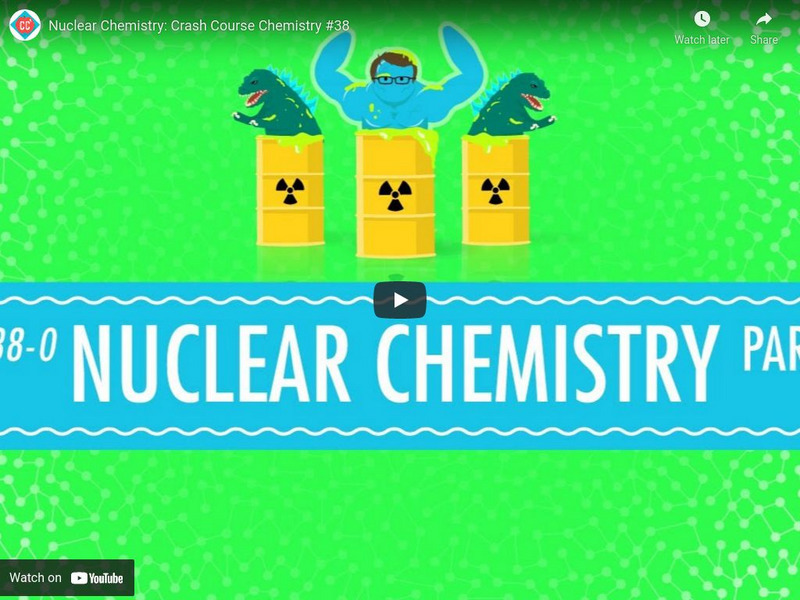Professor Dave Explains
Practice Problem: Radioactive Half-Life
All radioactive nuclei have a particular half-life, or the time it takes for their concentration to be cut in half. Given the half-life of one such nuclide, can you find the decay constant, and the fraction of nuclei left over after a...
Visual Learning Systems
Using Electricity: Electric Charges
This program explores the many important uses of electricity. The nature of electricity and the formation of electric current are highlighted. Special attention is also paid to safety and electricity. Concepts and terminology include:...
Curated Video
The Elements: Uranium
Discover the vital role uranium plays in nuclear technology. Chemistry - Periodic Table - Learning Points. Uranium was discovered in 1789. Uranium was named after the planet Uranus. Uranium is weakly radioactive. Uranium is important in...
SciShow
8 Lesser-Known, Useful Elements
There are 118 elements on the periodic table, but it seems like only a handful of them get any attention. But just because you haven't heard of an element doesn't mean that it isn't a vital part of everyday life. Hosted by: Michael...
SciShow
Chernobyl's Radioactive Wild Boar Paradox
After the Chernobyl Disaster, researchers have been studying the movement of radioactive contamination all over central Europe. Fortunately, that radioactive contamination is decreasing in just about every living thing, except for one...
Curated Video
Hazards From Radioactive Material | Radioactivity | Physics | FuseSchool
Hazards From Radioactive Material | Radioactivity | Physics | FuseSchool Nuclear power stations produce electricity, which of course is extremely useful. However, they also make radioactive waste. When items have no further use and have...
SciShow
Why Does Everything Decay Into Lead
If you look at a copy of the periodic table, you might notice that basically every element after lead is labelled as radioactive. And the vast majority of those elements wind up decaying into some version of lead eventually. But why is...
JFR Science
Isotopes and Half-Life: What Are Medical Isotopes?
How do medical professionals use radiation without doing more harm than good? Budding nuclear chemists begin their study of all things radioactive with a video from the JFR Science playlist. Topics include differences between isotopes,...
Khan Academy
More Exponential Decay Examples, Nuclear Chemistry, Chemistry
This video is an extension of the previous video, which introduced exponential decay and showed students how to solve for it. More examples are given to give students further practice.
Khan Academy
Khan Academy: Half Life Plot
Definition of half-life and graphing the decay of phosphorus-32. Calculating how much phosphorus-32 remains after 57.2 days. [6:42]
Khan Academy
Khan Academy: Half Life and Carbon Dating
Carbon dating is a real-life example of a first-order reaction. This video explains half-life in the context of radioactive decay. [12:28]
Crash Course
Crash Course Chemistry #38: Nuclear Chemistry
In this episode, Hank welcomes you to the new age, where he talks about transmutation among elements, isotopes, calculating half-life, radioactive decay, and spontaneous fission. [9:58]
Khan Academy
Khan Academy: Exponential Decay and Semi Log Plots
Practice using exponential decay equation to solve for relationship between k and half-life. Further learning by using semi-log plot to get graph of a straight line with slope of -k. [10:16]
Khan Academy
Khan Academy: More Exponential Decay Examples
Sal dives in even deeper with a few more examples of exponential decay. Practice calculating k from half-life, and calculating initial mass. [7:21]
PBS
Pbs Learning Media: Crash Course Chemistry: Nuclear Chemistry
In this episode, Hank talks about transmutation among elements, isotopes, calculating half-life, radioactive decay, and spontaneous fission. [9:56]










